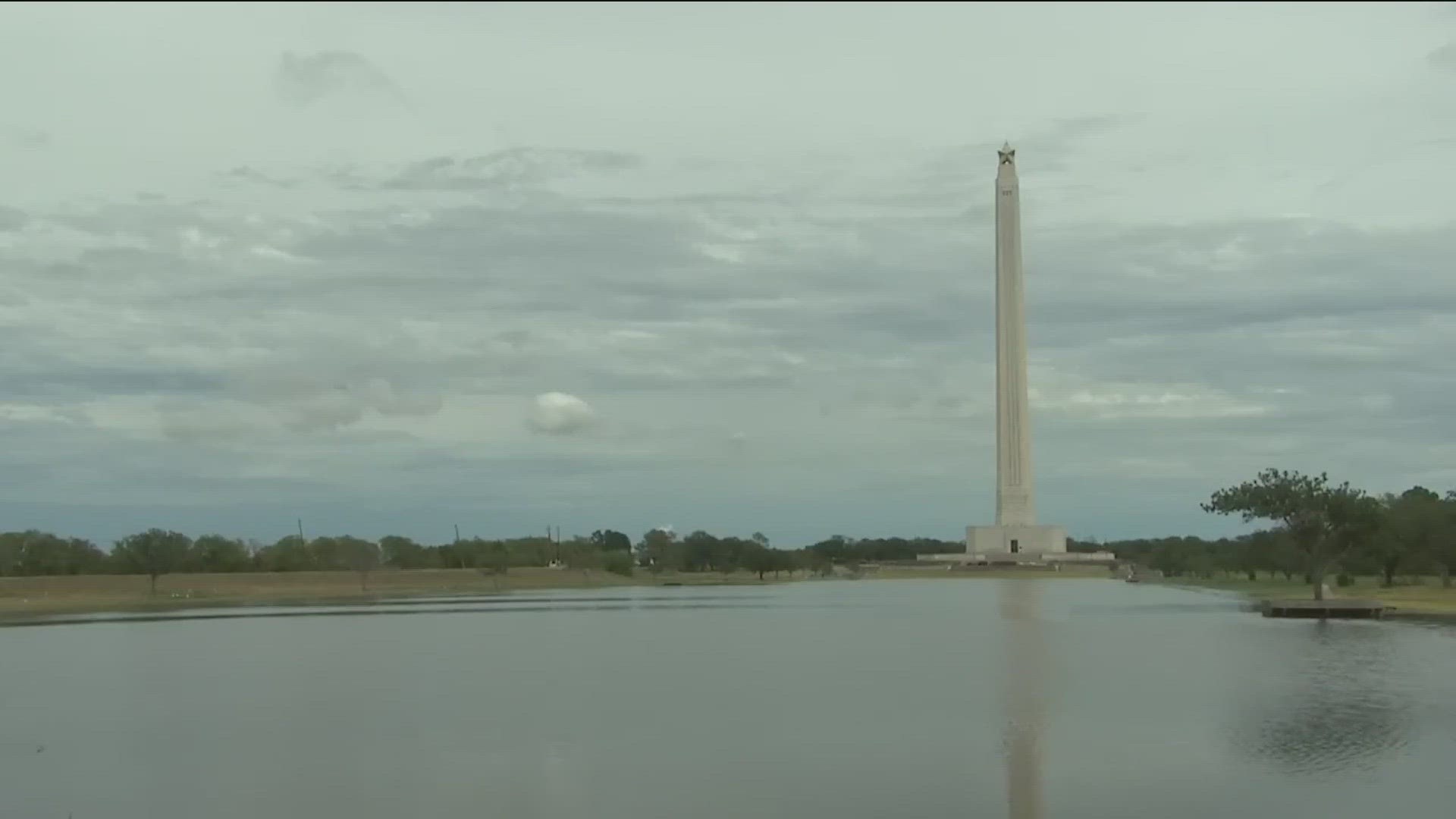AUSTIN, Texas — This week in April marks the 85th anniversary of the dedication of the San Jacinto Monument – a marvel of design and construction that stands tall today.
Looking at the monument, located east of Houston near La Porte, it’s easy to wonder how it was built. The land it stands on is soft clay, hardly strong enough, it seems, to support 70 million pounds of steel, concrete and limestone towering high into the air. It was also constructed in a region that often sees 100 mph-plus hurricanes.
Yet, it stands, solid and just as impressive as the day, April 21, 1939, when it was formally opened to the public.
The monument was built near the site of the battle that saw Texas win its independence from Mexico in 1836, the Battle of San Jacinto. It was largely the vision of Houston entrepreneur Jesse Jones who wanted to celebrate the rich history of Texas for the state’s 1936 centennial with a structure that would rival the tallest monument in the nation.
And rival it, it did. It stands 567 feet tall – 12 feet higher than the Washington Monument.
Jones was able to get a $1.5 million from federal state and private sources to make his vision happen.
As part of the Depression-era program to find jobs for the unemployed, the 150 men who were hired to build it had to come from the local area. Most had no experience with construction.
The exterior limestone was shipped from the Austin area – so called Texas Cordova Limestone, with the imprints of tiny sea creatures, created roughly 100 million years ago when Texas was covered by a shallow ocean that connected the Gulf of Mexico with the Arctic Sea.
Perhaps most stunning is the three-dimensional star on top that is 34 feet tall and weighs 220 tons. All that weight and all height, yet the entire project came off without anyone getting killed or even seriously hurt.
Today, the monument and museum are popular tourist stops: an engineering marvel from nearly 100 years ago and a tribute not only to Texas, but to the people who dreamed of it, designed it and built it.

